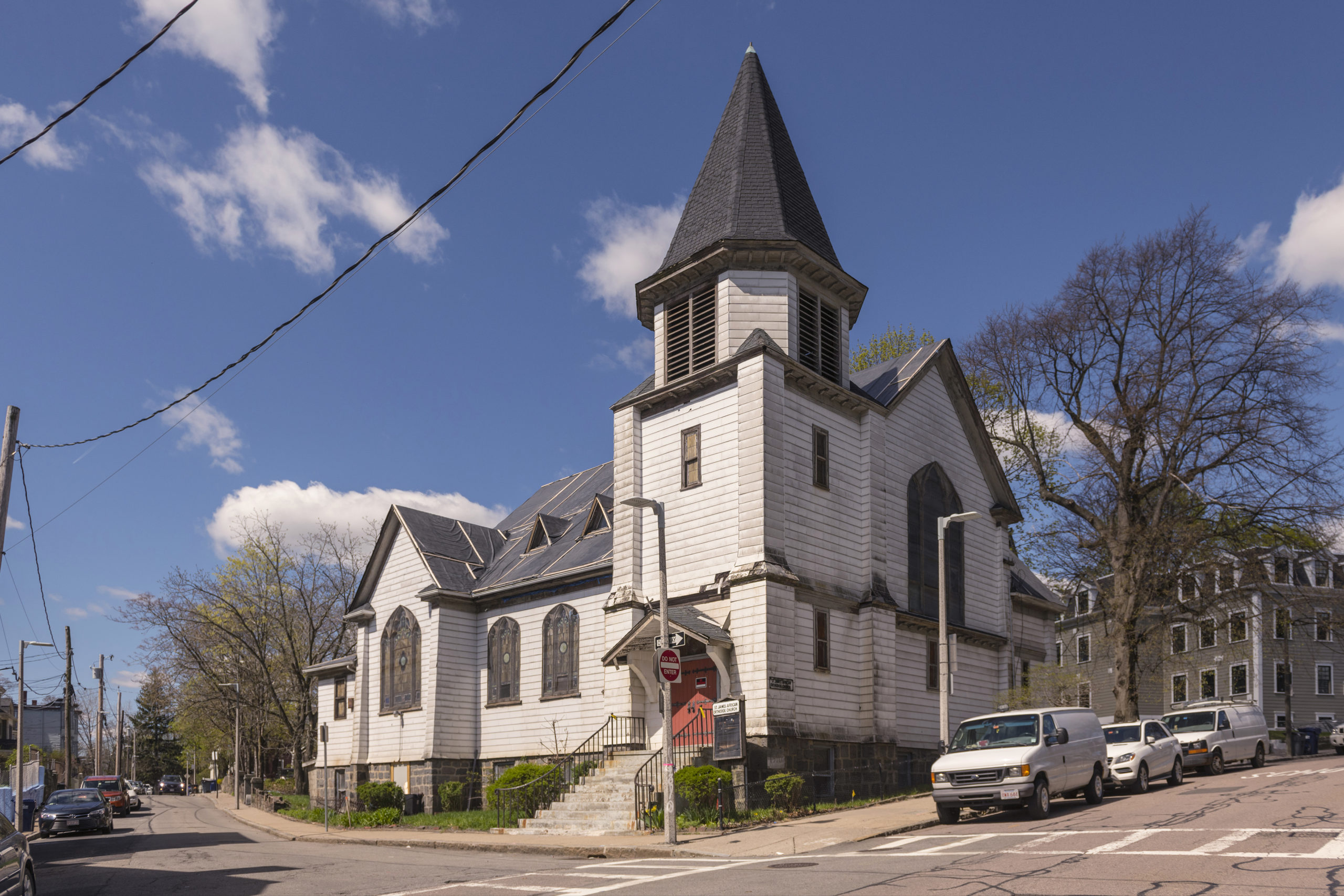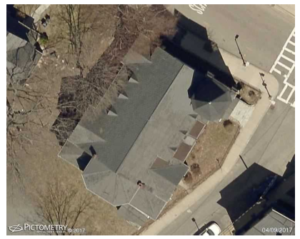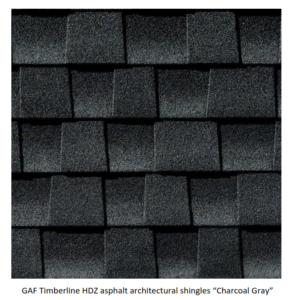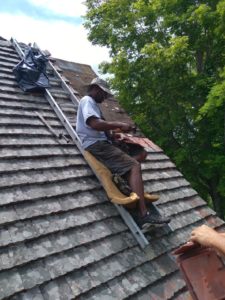
29 Jul 2022 Is asphalt historic? Roof replacement begins at St. James African Orthodox Church
Over the next couple of months, contractor Olde Mohawk Preservation will install a new roof at the 1910 St. James African Orthodox Church in Roxbury. Beginning Monday, August 1st, they will begin removing multiple layers of old asphalt shingles from the church in order to expose the building’s roof structure.
“Care must be taken not to damage any of the architectural woodwork that comprises the historic fabric of the building,” according the Olde Mohawk’s principal, Ward Hamilton. “Demolition of these materials will allow us to assess the condition of roof timbers and sheathing, all of which will be repaired before proceeding with installation of a new roof.”

The condition of this roof has been a problem for the building since Historic Boston acquired the building in 2018. At that time, HBI installed a rubber membrane over the building in order to prevent water penetration. However, that was a temporary solution, waiting for the resources to undertake a more permanent repair.
Thanks to funding from the George B. Henderson Foundation and the Pierce Charitable Trust, HBI has commissioned a new roof along with structural repairs to roof timbers. The question is “Why asphalt?” “Asphalt shingles’ and ‘historic preservation’ are not typically uttered in the same breath,” says Ward Hamilton, “but there is no evidence of other roof covering materials (i.e., cedar shingles) has been uncovered to date.”

According to Hamilton, asphalt shingles were first introduced as a construction material in 1901 and, by 1911, were being distributed and used widely throughout the United States. However, the earlier shingles on St. James were a single ply (layer) that afforded less protection than the three-ply shingles that are being installed on the church in the current project. ‘Replacement in kind’ is in order here, but with a twist: the building will benefit from the improvement in asphalt shingle technology.

Devon Brown will lead the project at St. James
“There is a constant temptation in the trades to use the latest and greatest construction materials,” says Hamilton, “but special care must be taken any time contemporary construction materials are introduced into traditional wall or roof systems. The first rule of preservation is ‘Do no harm’ … yet that’s exactly what can happen if you’re not careful.”
Olde Mohawk Historic Preservation is a contracting and consulting firm owned by Ward Hamilton that specializes in traditional roofing systems. A mason by trade, Hamilton started the business in 2004 while living in Upstate New York. In 2008, he expanded operations across New England before moving back home to Melrose, Massachusetts. In 2012, Hamilton earned an MS in Historic Preservation at UMass-Amherst. The combination of tangible, hands-on experience and the practical application of the esoteric concepts of preservation have helped him deliver the best possible results to the stewards of historic buildings.
The project manager for Olde Mohawk is Devon Brown. Born and raised in Cambridge, Devon has been with Olde Mohawk since 2017. In addition to slate, clay tile, cedar shingle and other roofing tasks, he is a skilled copper sheet metal craftsman. Devon’s work has been instrumental to the success of several high-profile projects at Tufts University, the Longy School of Music, the National Center for Afro-American Artists, and Sawyer Memorial Library in Boylston. Devon brings a broad set of skills to the table and many years of experience to Olde Mohawk. Recently, Olde Mohawk was recognized with a preservation award for our work at the Greek Institute, a circa 1858 Italianate in Cambridge, by the Cambridge Historical Commission. Devon led the restoration of the slate roof and installation of the new gutters. This was no small feat as the gutters are a significant component of the cornice massing. His expertise with slate and copper—as well as the preservation carpentry aspect of the project—were the key to that projects’ success.



